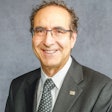BOSTON - The constant change in ethnic diversity in the U.S. is prompting large metropolitan hospitals to allocate more resources to interpretive services (IS) to help shepherd patients with limited or no English proficiency through radiologic procedures, according to a presentation Monday at the 2009 American Roentgen Ray Society (ARRS) meeting.
From fiscal years 2003 to 2007, the number of IS encounters at Beth Israel Deaconess Medical Center in Boston has increased 66%, from 41,882 in 2003 to 68,344 in 2007. In addition, the hospital's IS budget has almost doubled, from $1.4 million in 2003 to $2.7 million in 2007.
The numbers beg the following question: How helpful are interpretive services? Of the 50 radiologists polled at Beth Israel, 48 (98%) believed IS decreased procedure time when interpreters were present, but 44 radiologists (88%) indicated that time was wasted waiting for IS personnel to arrive.
The results of the internal study on interpretive services at Beth Israel were presented at the ARRS meeting by co-author Dr. Sheryar Sarwar.
IS expansion
Beth Israel's IS department was created in 1979 with one interpreter. By 2007, there were 50 staff interpreters, who provided services through face-to-face encounters, telephone calls, and video conferencing.
Today, the full-time IS staff caters 24/7 to patients speaking Russian, Spanish, Chinese, and Cape Verdean/Portuguese, which account for the four most in-demand languages at the facility. Available nonstaff language interpretation includes Greek, French, Japanese, Italian, and Korean.
Researchers used the hospital database to identify developing trends over the five-year study period, "paying attention to the most common and popular languages catered to, the percent growth rates and changing demographics, and the total costs incurred as a result of the delivery of IS in radiology," Sarwar said.
IS encounters among full-time staff
| ||||||||||||||
| * projected Source: Beth Israel Deaconess Medical Center |
||||||||||||||
The study's demographic analysis showed that in fiscal years 2003 and 2004, the most common age group for whom IS staff interpreted was greater than 65 years old. By 2005, 2006, and 2007, the most common age group was 36 to 55 years. "The least common throughout the [five-year] period was that of zero to 35 years of age," Sarwar said.
The language that experienced the greatest number of encounters and has steadily increased from 2003 to 2007 was Chinese, which showed a 146% gain in IS encounters. The demand for Russian increased 46%, while Cape Verdean/Portuguese rose 39%. Spanish experienced the greatest percentage increase, at 232%.
Average annual cost for encounters among four most common languages
| ||||||||||
| Source: Beth Israel Deaconess Medical Center | ||||||||||
Among the 50 radiologists who took the survey to identify possible barriers and obstacles faced in encounters with IS staff and non-English speaking patients, 21 were from CT, 13 were from MRI, nine were from ultrasound, and seven were from x-ray.
The poll found that 42 radiologists (84%) had contact with IS, six radiologists (12%) claimed that IS was "rarely present" for scheduled interpretation, and seven respondents (14%) noted that IS was "never present" during a scan.
In addition, 21 radiologists (42%) said IS was unable to stay for the duration of the patient's exam, and 20 radiologists (40%) said limited-English-speaking patients were not as prepared as those who were fluent in English.
Perhaps most important, 45 radiologists (90%) of those polled said scanning time and the duration of the exam "was inadvertently prolonged with IS present, compared with situations that did not require their assistance," Sarwar said.
Study limitations
Sarwar noted several limitations of the IS study. Researchers were unable to survey patients, thus "reliance would be on the interpreter, and, therefore, wouldn't be or may not be biased or judgmental," he added. "We were unable to account for cost or delay incurred as a result of unavailability of the interpreter, and we were unable to account for delays in scheduling [that may have delayed] the diagnosis and treatment of patients due to the unavailability of IS staff."
Based on the data gathered, the study concluded that providing efficient IS services to patients with limited English proficiency is "challenging, because of the continual change in patient demographics," Sarwar said. "IS is a financial burden that must be factored into the delivery of radiologic services in large metropolitan hospitals."
Radiology's response
Even with the increased demand for IS, Sarwar said there have been no major changes in the way patients who lack English proficiency are scheduled at Beth Israel, adding that it depends, in part, on the availability of an interpreter.
"With Boston being such a melting pot and having a huge array of diversity, the staff of interpreters is consistently on the run," Sarwar said, which is why interpreters often cannot stay for the duration of an imaging scan. "Basically, scheduling and booking of patients depends on the discretion of interpretive services and whether they can accommodate that schedule."
Beth Israel's IS department has encouraged the hospital to hire more bilingual or multilingual healthcare staff, particularly technologists, who are proficient in commonly used medical terms. Those abilities would be most helpful in the emergency department, if an interpreter is not available.
"If you have someone who is multilingual or bilingual and can speak Spanish or Portuguese, that would facilitate the proceedings," Sarwar said.
By Wayne Forrest
AuntMinnie.com staff writer
April 27, 2009
Related Reading
UK launches emergency care phrase book in 36 languages, February 18, 2004
Chinese women respond best to doctors' breast cancer screening advice, February 19, 2003
Copyright © 2009 AuntMinnie.com



















